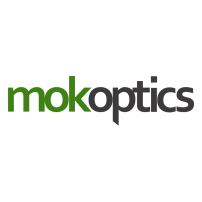Introduction of Meniscus Lens
The meniscus lens is a unique optical element with one concave and one convex surface. Due to its special shape and optical properties, the meniscus lens exhibits superior performance in many applications, especially in precision cutting, marking and other optical applications. This article will explore the structure, working principle, application field and comparison of the meniscus lens with other lens types.

Structure and characteristics of meniscus lens
1. Structural composition
The structure of the meniscus lens consists of a convex surface and a concave surface. This design enables the lens to have both converging and diverging optical properties. Depending on its curvature and direction, the meniscus lens can achieve different optical effects.
Convex surface*: Usually used to focus light and make it converge to a point.
Concave surface: Used to diverge light, suitable for occasions where a diffuse beam is required.
2. Optical properties
The optical properties of the meniscus lens enable it to perform well in terms of beam diameter and aberration control. Compared to traditional plano-convex lenses, meniscus lenses enable smaller spot sizes, which is critical for optical applications that require high precision.
Beam diameter: Meniscus lenses are able to produce smaller beam diameters, which reduces spherical aberration and beam loss when cutting or marking.
Power output: The smaller spot size provided by the lens can produce the same power output in a smaller area, which is critical for improving cutting efficiency and precision.
Application areas of meniscus lenses
1. Precision cutting
In laser cutting technology, meniscus lenses are widely used to improve cutting accuracy and speed. Due to their ability to produce smaller spots, meniscus lenses can achieve higher focusing effects when cutting materials, thereby improving cutting quality.
Cutting accuracy: The design of meniscus lenses enables them to focus the laser beam to a very small area, reducing the heat-affected zone and reducing the risk of material deformation.
Cutting speed: Studies have shown that cutting speeds can be increased by up to 5% using meniscus lenses, which gives them a competitive advantage in industrial applications.
2. Laser marking
In addition to cutting, meniscus lenses also play an important role in laser marking. Laser marking requires extremely high beam quality and focusing ability to ensure the clarity and durability of the mark.
Beam quality: Meniscus lenses can provide better beam quality to ensure the accuracy of laser marking.
Marking effect: Due to its small spot size, meniscus lenses can achieve high-resolution marking effects on various materials.
3. Medical imaging
Meniscus lenses are also used in the field of medical imaging. They can be used in endoscopes and other optical devices to improve imaging quality.
Imaging clarity: The optical properties of meniscus lenses can improve the resolution of imaging systems, allowing doctors to obtain clearer images when making diagnoses.
Optical design: In complex optical systems, meniscus lenses can be used in combination with other optical elements to achieve better imaging effects.
Comparison of Meniscus Lens with Other Lens Types
1. Comparison with Plano-Convex Lens
Although meniscus lenses are more expensive than plano-convex lenses, their advantages are obvious in precision optical applications.
Price: The manufacturing cost of meniscus lenses is relatively high, mainly due to their complex optical design and processing technology.
Cutting Accuracy: The advantages of meniscus lenses in cutting accuracy and speed make them more attractive in the industrial field.
2. Comparison with Concave Lens
Concave lenses are mainly used to diverge light, while meniscus lenses combine the characteristics of convergence and divergence.
Optical Effect: Meniscus lenses can provide more flexible optical effects and are suitable for a variety of application scenarios.
-Application Range: Concave lenses may be more economical in certain specific cases, but meniscus lenses have more advantages in applications that require high precision and high efficiency.
Conclusion
As an important optical element, meniscus lenses have shown their unique advantages in many fields. Despite its high price, the high precision and high efficiency of meniscus lenses make them an indispensable choice in applications such as precision cutting, laser marking and medical imaging. With the continuous development of optical technology, the application prospects of meniscus lenses will be broader and they may play an important role in more fields in the future.
